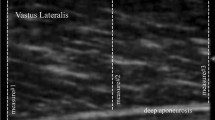Abstract
The aim of the present work was to verify that skilled volleyball players present specific adaptations in both neuromuscular control and movement biomechanics, showing an improved neuromuscular control around the knee joint than in non-jumper athletes. Seven male volleyball players and seven male non-jumper athletes were recruited for this study. The following tests were performed in a random order: single countermovement jump (CMJ), single squat jump. At the end of the series, subjects performed a repetitive CMJ test. Electromyographic signals were recorded from vastus lateralis and biceps femoris muscles on both sides. Ground reaction forces and moments were measured with a force plate. Volleyball athletes performed better in all tests and were more resistant to fatigue than non-jumper athletes. Furthermore, volleyball athletes showed a reduced co-activation of knee flexor/extensor muscles. The present results seem to stand for a neural adaptation of the motor control scheme to training.






Similar content being viewed by others
Abbreviations
- ARV:
-
Average rectified value
- BF:
-
Biceps femoris
- BW:
-
Body weight
- CI:
-
Co-activation index
- CMJ:
-
Countermovement jump
- CNS:
-
Central nervous system
- CO:
-
Co-activation
- FT:
-
Flight time
- NJ:
-
Non-jumpers
- sEMG:
-
Surface electromyography
- SJ:
-
Squat jump
- TO:
-
Take-off
- VAL:
-
Vastus lateralis
- VP:
-
Volleyball players
References
Aagaard P, Simonsen EB, Andersen JL, Magnusson SP, Bojsen-Møller F, Dyhre-Poulsen P (1999) Antagonist muscle coactivation during isokinetic knee extension. Scand J Med Sci Sports 10(2):58–67
Baratta R, Solomonow M, Zhou BH, Letson D, Chuinard R, D’Ambrosia R (1988) Muscular coactivation: the role of the antagonist musculature in maintaining knee stability. Am J Sports Med 16(2):113–122
Basmajian JV (1977) Motor learning and control: a working hypothesis. Arch Phys Med Rehabil 58(1):38–41
Basmajian JV, De Luca CJ (1985) Muscles alive: their functions revealed by electromyography. Williams & Wilkins, Baltimore
Bazzucchi I, Riccio ME, Felici F (2008) Tennis players show a lower coactivation of the elbow antagonist muscles during isokinetic exercises. J Electromyogr Kinesiol 8(5):752–759
Bernardi M, Solomonow M, Nguyen G, Smith A, Baratta R (1996) Motor unit recruitment strategy changes with skill acquisition. Eur J Appl Physiol Occup Physiol 74(1–2):52–59
Bernstein IH, Schurman DL, Forester G (1967) Choice reaction time as a function of stimulus uncertainty, response uncertainty, and behavioral hypotheses. J Exp Psychol 74:517–524
Bobbert MF, van Ingen Schenau GJ (1988) Coordination in vertical jumping. J Biomech 21(3):249–262 Erratum in: J Biomech 21(9):78
Carolan B, Cafarelli E (1992) Adaptations in coactivation after isometric resistance training. J Appl Physiol 73(3):911–917
Dowling JJ, Vamos L (1993) Identification of kinetic and temporal factors related to vertical jump performance. J Appl Biomech 9:95–110
Duchateau J, Semmler JG, Enoka RM (2006) Training adaptations in the behavior of human motor units. J Appl Physiol 101(6):1766–1775
Enoka RM (2002) Neuromechanics of human movement. Human kinetics, 3rd edn. Champaign, IL, p 463
Ferris DP, Bohra ZA, Lukos JR, Kinnaird CR (2006) Neuromechanical adaptation to hopping with an elastic ankle–foot orthosis. J Appl Physiol 100:163–170
Guissard N, Duchateau J (2004) Effect of static stretch training on neural and mechanical properties of the human plantar-flexor muscles. Muscle Nerve 29(2):248–255
Hagood S, Solomonow M, Baratta R, Zhou BH, D’Ambrosia R (1990) The effect of joint velocity on the contribution of the antagonist musculature to knee stiffness and laxity. Am J Sports Med 18(2):182–187
Häkkinen K, Komi PV (1983) Changes in neuromuscular performance in voluntary and reflex contraction during strength training in man. Int J Sports Med 4:282–288
Hermens HJ, Freriks B, Disselhorst-Klug C, Rau G (2000) Development of recommendations for SEMG sensors and sensor placement procedures. J Electromyogr Kinesiol 10(5):361–374
Kellis E, Arabatzi F, Papadopoulos C (2003) Muscle co-activation around the knee in drop jumping using the co-contraction index. J Electromyogr Kinesiol 13(3):229–238
Kraemer WJ, Newton RU (1994) Training for improved vertical jump. Sports Sci Exch 53(7):223–229
Linthorne NP (2001) Analysis of standing vertical jumps using a force platform. Am J Phys 69(11):1198–1204
Pandy MG, Zajac FE (1991) Optimal muscular coordination strategies for jumping. J Biomech 24:1–10
Sachs L (1978) Applied statistics, 2nd edn. Springer, New York
Vanezis A, Lees A (2005) A biomechanical analysis of good and poor performers of the vertical jump. Ergonomics 48(11–14):1594–1603
Voigt M, Simonsen EB, Dyhre-Poulsen P, Klausen K (1995) Mechanical and muscular factors influencing the performance in maximal vertical jumping after different prestretch loads. J Biomech 28(3):293–307
Acknowledgments
The technical support of Susan Dewhurst and Stefano Bellotti is gratefully acknowledged. The work was funded by the authors’ department.
Author information
Authors and Affiliations
Corresponding author
Additional information
Communicated by Susan Ward.
Rights and permissions
About this article
Cite this article
Masci, I., Vannozzi, G., Gizzi, L. et al. Neuromechanical evidence of improved neuromuscular control around knee joint in volleyball players. Eur J Appl Physiol 108, 443–450 (2010). https://doi.org/10.1007/s00421-009-1226-z
Accepted:
Published:
Issue Date:
DOI: https://doi.org/10.1007/s00421-009-1226-z




